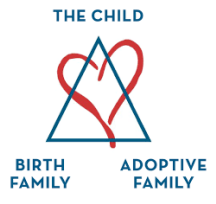For many people who have not been directly touched by adoption, this article may seem like a foreign concept filled with words borrowed from a language you did not know existed. Adoption, after all, is
something we usually observe from a distance or on television, with limited understanding of what someone who has lived out an adoption story may experience.
If you are someone that falls into this category, I appreciate your willingness to dip your toe into the waters of learning some adoption terms and concepts. Honestly, we are all constantly learning about adoption: Whether we are adoption professionals, triad members,* or the people who love them. See below for a definition of an adoption triad.
To understand the world of adoption one must first recognize that adoption stories are unique; they are contrastingly beautiful and painful, wholesome and gut-wrenching. Most adoption stories are all of
these things at once. But the best we can do is to learn what information we can from a posture of humility. As professionals, we commit to making discerning choices about adoption policy and procedures
according to the most recent research available. And, we listen: to adoptees, adoptive families, and birth families. We learn from the past and we seek to use integrity in our work with each client of adoption.
So whatever brought you to this page to learn a little about open adoption, I hope that you keep these ideas at top of mind and join us in the pursuit of learning about adoption as a whole.

